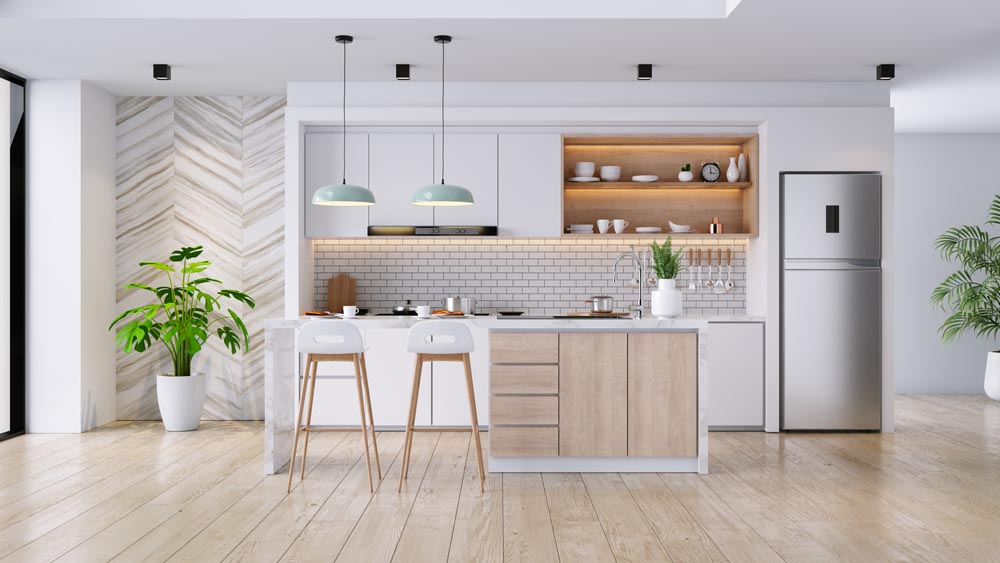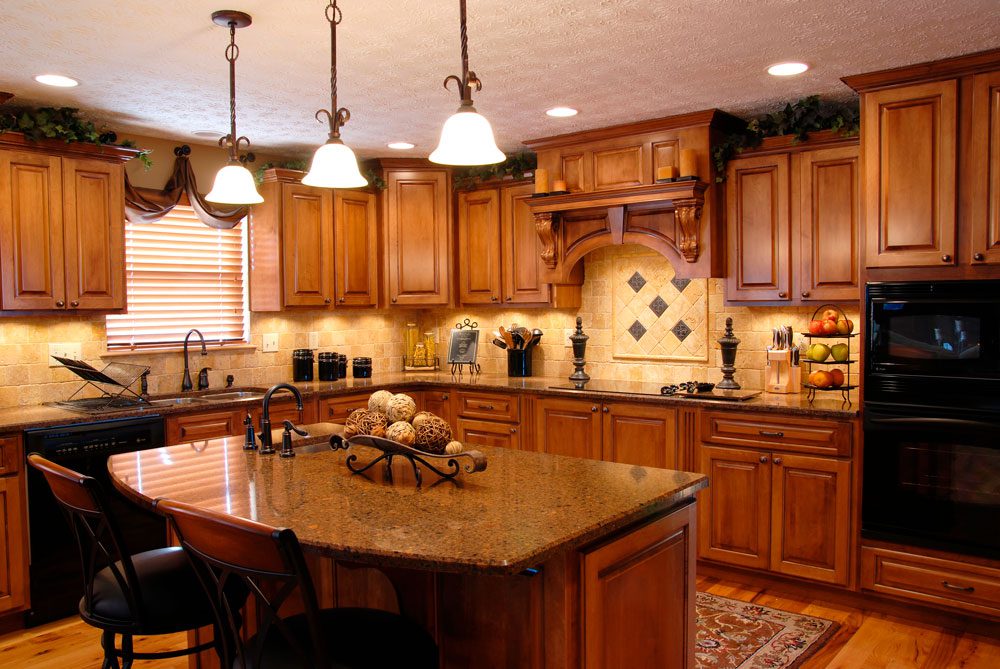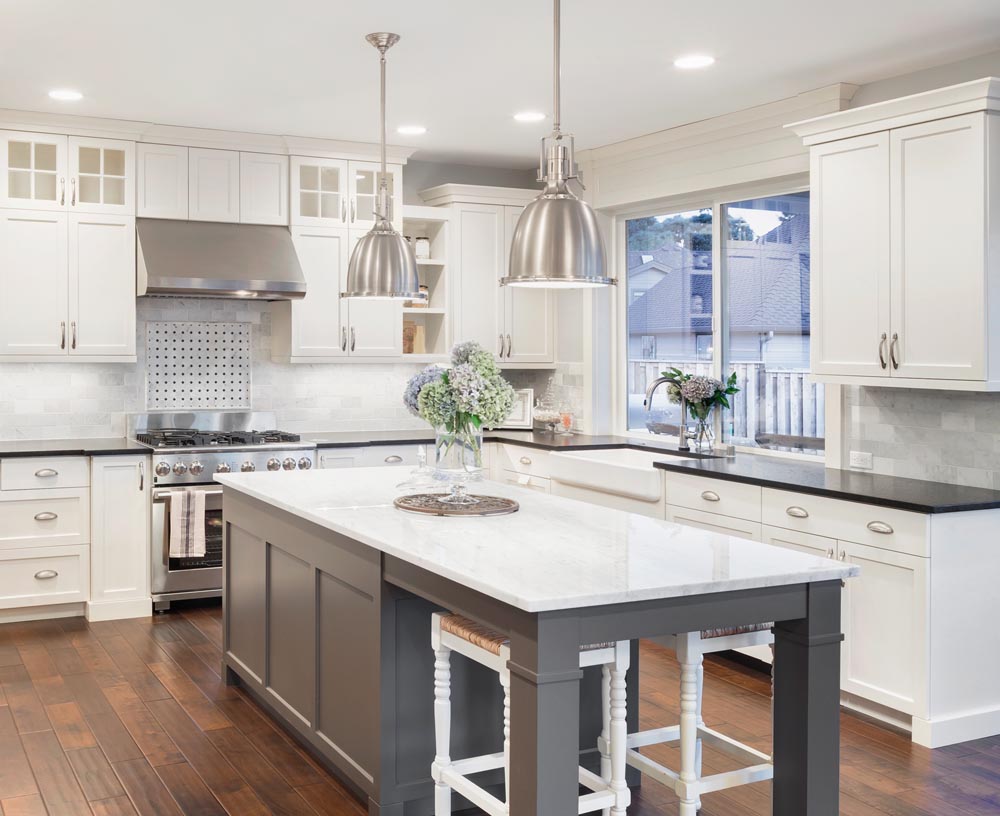The kitchen is the heart of every home, reflecting not only functionality but also personal style. Whether you’re remodeling your current space or designing a new one, understanding the three main kitchen styles—traditional, modern, and transitional—can help you create a space that aligns with your vision and lifestyle.
Traditional Kitchen Style
Traditional kitchens exude warmth and elegance, offering a timeless aesthetic that draws inspiration from classic European design. These kitchens often feature intricate details such as crown molding, raised-panel cabinetry, and decorative corbels. Warm wood tones, like cherry or oak, are commonly used for cabinets, complemented by rich, natural stone countertops such as granite or marble. Backsplashes in traditional kitchens typically showcase intricate tile patterns or subway tiles in neutral tones.
Another hallmark of traditional kitchens is their use of ornate lighting fixtures, such as chandeliers or pendant lights with antique finishes. Appliances in traditional kitchens are often integrated or concealed behind custom cabinet panels to maintain a cohesive look. Arched doorways, farmhouse sinks, and decorative hoods over the range further enhance the charm of traditional kitchen design.
Contemporary Kitchen Style
Contemporary kitchens prioritize simplicity, functionality, and sleek aesthetics. This style is characterized by clean lines, minimalist cabinetry, and a focus on maximizing space and efficiency. Flat-panel or slab-style cabinets are often made from materials like high-gloss laminate, acrylic, or even metal, creating a smooth, modern appearance. Color schemes in contemporary kitchens tend to be monochromatic, with shades of white, black, or gray being popular choices, though bold accents are sometimes incorporated for contrast.
Countertops in contemporary kitchens are typically made from materials such as quartz, stainless steel, or concrete, providing a durable and stylish surface. Backsplashes often feature glass, stainless steel, or large-format tiles, creating a streamlined effect. State-of-the-art appliances, including built-in ovens and induction cooktops, are common in contemporary kitchens, and they are often paired with innovative smart home technology.
Transitional Kitchen Style
The transitional kitchen style bridges the gap between traditional and contemporary designs, offering the perfect balance of warmth and modernity. This versatile style often incorporates elements from both ends of the design spectrum, such as shaker-style cabinets paired with sleek hardware. Neutral color palettes dominate transitional kitchens, with whites, grays, and beiges creating a soothing and adaptable environment.
Materials in transitional kitchens include a mix of natural and engineered options, such as quartz countertops paired with wood or tile flooring. Backsplashes can vary from simple subway tiles to more intricate patterns, allowing homeowners to personalize their space. Lighting in transitional kitchens often combines modern fixtures with classic designs, such as pendant lights with clean lines or chandeliers with understated elegance. This style is ideal for those seeking a timeless yet fresh kitchen aesthetic.
Key Considerations When Choosing a Kitchen Style
When selecting the perfect kitchen style, consider your home’s overall architecture and your personal preferences. Budget and lifestyle also play a crucial role in determining the best design for your space. Whether you prefer the rich detailing of a traditional kitchen, the sleek lines of a contemporary design, or the harmonious blend of a transitional style, understanding the key features of each can help you make an informed decision.
Conclusion
The three main kitchen styles—traditional, contemporary, and transitional—each offer unique features and benefits to suit various tastes and needs. By understanding the characteristics of these styles, you can create a kitchen that not only meets your functional requirements but also enhances the beauty and value of your home. Take the time to explore design options, materials, and layouts to ensure your kitchen reflects your personal style and serves as the heart of your home. And know that Eikos Kitchen and Bath Design Studio is highly experienced and qualified to create whatever style you end up choosing



